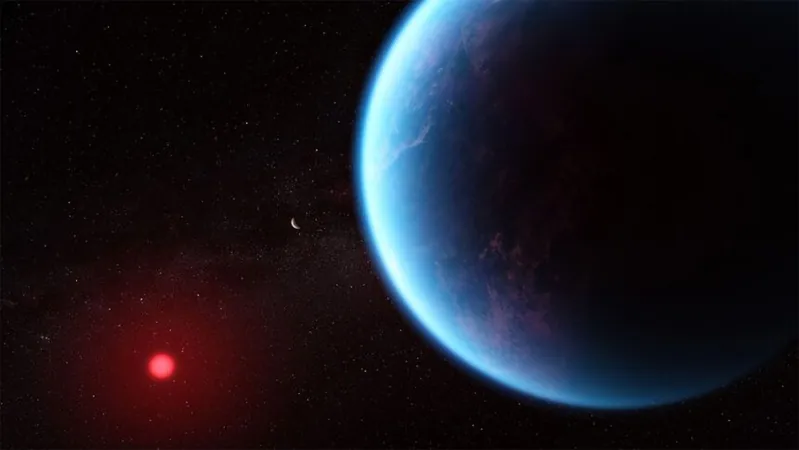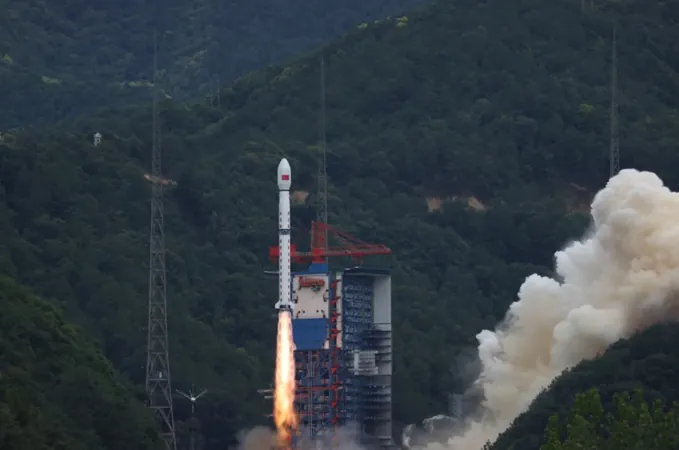
Astounding Discovery on a Distant Planet Dims as New Research Unfolds
2025-06-06
Author: John Tan
In a groundbreaking turn of events, scientists initially celebrated a potential biosignature on the distant planet K2-18b, believed to be a hotspot for extraterrestrial life. However, just weeks later, skepticism clouds these claims as new studies emerge.
The Alluring Hint of Life
In April, astronomers detected two intriguing molecules in the atmosphere of K2-18b—dimethyl sulfide (DMS) and dimethyl disulfide (DMDS)—which on Earth are primarily produced by living organisms. This discovery was seen as the most compelling evidence yet of alien life.
Caution Amid Excitement
However, the excitement quickly gave way to caution. Dr. Luis Welbanks from Arizona State University raised red flags about the preliminary results, highlighting the need for more definitive evidence before jumping to conclusions about life beyond Earth.
Skepticism from Experts
Three independent teams, including that of Welbanks, scrutinized the models used in the original study. They uncovered discrepancies that suggested the claimed biosignatures could be misleading or even incorrect.
Nuances of Detecting Distant Exoplanets
K2-18b, located 124 light-years away, is classified as a Hycean world, potentially covered in liquid water and a hydrogen-rich atmosphere. While the James Webb Space Telescope initially provided groundbreaking data, subsequent reviews from experts at the University of Chicago indicated that the findings were marred by noise and a lack of clarity.
Flawed Models Raise Questions
As scientists reviewed the data, discrepancies emerged in the perceived temperatures of K2-18b. The initial study suggested extreme heat, raising further doubts about the planet's habitability. Alternative explanations for the detected signals began to surface, proliferating the conversation among astronomers.
The Burden of Proof
Dr. Madhusudhan, the lead author of the initial study, acknowledges the criticism but remains optimistic. He and his team are now expanding their analysis to include 650 different molecules in a bid to find stronger evidence for DMS on K2-18b.
Ongoing Debate in the Scientific Community
As the scientific community debates these findings, the journey toward confirming extraterrestrial life continues. Both camps agree that the quest for knowledge regarding K2-18b is vital, underscoring the complexities involved in studying distant worlds. While definitive proof may remain elusive for now, researchers are invigorated by the challenge and the potential for discovery.
The Quest for Life Beyond Earth Continues
Ultimately, this ongoing dialogue among scientists exemplifies the rigorous nature of research in the hunt for life beyond our planet. Though the quest may be fraught with uncertainty, the pursuit of knowledge remains an exhilarating endeavor for astronomers, biologists, and the world at large.





 Brasil (PT)
Brasil (PT)
 Canada (EN)
Canada (EN)
 Chile (ES)
Chile (ES)
 Česko (CS)
Česko (CS)
 대한민국 (KO)
대한민국 (KO)
 España (ES)
España (ES)
 France (FR)
France (FR)
 Hong Kong (EN)
Hong Kong (EN)
 Italia (IT)
Italia (IT)
 日本 (JA)
日本 (JA)
 Magyarország (HU)
Magyarország (HU)
 Norge (NO)
Norge (NO)
 Polska (PL)
Polska (PL)
 Schweiz (DE)
Schweiz (DE)
 Singapore (EN)
Singapore (EN)
 Sverige (SV)
Sverige (SV)
 Suomi (FI)
Suomi (FI)
 Türkiye (TR)
Türkiye (TR)
 الإمارات العربية المتحدة (AR)
الإمارات العربية المتحدة (AR)